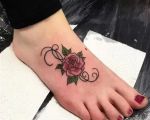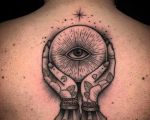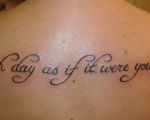Tattoo Studios Offering Hourly Rates: What You Need to Know
The Appeal of Tattoo Studios with Hourly Rates
When it comes to getting a tattoo, the price is often one of the biggest considerations. As someone who has gotten several tattoos over the years, I can tell you that understanding how pricing works in the tattoo world is crucial to making an informed decision. Many tattoo studios offer pricing by the hour, and this pricing structure can vary greatly depending on the artist, location, and design complexity.
In my experience, hourly rates can offer more flexibility and transparency when it comes to tattoo pricing, especially for larger or more detailed designs. Whether you're looking for a small, simple piece or something more elaborate, understanding how hourly rates work at tattoo studios is key to managing your expectations and your budget. In this article, I’ll break down how hourly rates work at tattoo studios, what factors influence the cost, and share my insights on why this pricing structure might be right for you.
1. How Do Hourly Rates Work at Tattoo Studios?
In general, tattoo studios offering hourly rates charge clients based on the amount of time the artist spends working on the tattoo. This means that the final price will depend on the complexity of the design, the size of the tattoo, and how long it takes to complete. When I first encountered the concept of hourly rates, I was a bit confused, as many people are. It seemed like it would be difficult to predict the final cost of my tattoo. However, I quickly learned that tattoo artists are very skilled at estimating how long a tattoo will take based on the design you choose.
For example, a small, simple design might only take an hour or two, whereas a larger, more intricate piece could take several hours or even multiple sessions. Many studios have a standard hourly rate, which may vary depending on the artist's skill level, reputation, and the location of the studio. When I first went to a studio that used hourly rates, I was able to discuss the design with the artist, and they gave me a good estimate of how long the session would take, allowing me to budget accordingly.
Some tattoo studios may also have a minimum charge for a session, which is something you’ll want to confirm before booking your appointment. This ensures that even if your tattoo takes less time than expected, you’re still paying for the artist’s time. It’s a good idea to have a clear understanding of the hourly rate and any minimum charges before committing to the tattoo process.
2. Factors That Influence Hourly Tattoo Rates
The hourly rate at a tattoo studio can vary for several reasons. I’ve learned that the most important factors influencing the cost include the artist’s experience, the location of the studio, and the intricacy of the design. Let me explain these factors in more detail:
- Artist’s Experience: One of the main factors influencing the hourly rate is the skill level and reputation of the artist. An experienced, highly sought-after artist will typically charge more per hour than a less experienced artist. I’ve found that artists with years of experience and a solid portfolio often command higher rates, but their expertise often justifies the price. If you're getting a tattoo from a well-known artist, expect to pay a premium for their time.
- Location: The location of the tattoo studio also plays a significant role in the pricing. For example, studios in major cities like Los Angeles or New York typically charge higher hourly rates than those in smaller towns. This is because the cost of living in these areas is higher, and the demand for tattoos is greater. In my experience, if you’re looking to get a tattoo in a big city, you can expect to pay more per hour compared to smaller, less populated areas.
- Design Complexity: The complexity of your tattoo design will also affect the hourly rate. Simple tattoos, such as small symbols or lettering, can be completed quickly and will likely cost less per hour. However, more intricate designs that require detailed shading, coloring, or large coverage areas will take longer to complete, thus raising the overall price. When I got my sleeve tattoo, it took multiple sessions, and the hourly rate reflected the amount of time and skill involved in the detailed work.
Understanding these factors will help you estimate how much your tattoo will cost, allowing you to better prepare financially and avoid any surprises when the final bill arrives.
3. Pros and Cons of Hourly Rate Pricing
As with any pricing structure, hourly rates for tattoos come with their own set of pros and cons. After getting a few tattoos under hourly rates, I’ve come to appreciate the flexibility and transparency it offers, but it’s not always the best option for everyone. Let’s break down some of the key advantages and disadvantages of hourly rates:
- Pros:
- Transparency: Hourly rates are often more transparent because you know exactly what you're paying for—the artist’s time. When I got a large tattoo, I appreciated that I was charged by the hour, as it allowed me to better manage my budget and expectations.
- Flexibility: Since the price is based on time, it allows for more flexibility in terms of the design. You can request changes during the session without worrying about a fixed price per design element. The artist will simply adjust the time needed to accommodate your requests.
- Cons:
- Uncertainty: The main downside of hourly rates is that it can be difficult to predict the final cost, especially if the design ends up taking longer than expected. I once underestimated the time required for a tattoo, which resulted in a higher cost than I initially planned for.
- Potential for Long Sessions: Some designs can take longer than anticipated, which can result in long tattoo sessions. While some people enjoy the experience, others may find it uncomfortable. I’ve had a few long sessions that tested my patience and tolerance for sitting still!
Ultimately, the pros and cons of hourly rates depend on your tattoo goals and budget. If you’re getting a detailed piece and want the flexibility to adjust your design as you go, hourly rates may be the way to go. However, if you prefer a more predictable pricing structure, you might want to explore flat-rate pricing options offered by some studios.
4. How to Manage Your Tattoo Budget When Paying Hourly
One of the most important things to keep in mind when getting a tattoo with an hourly rate is budgeting. I quickly realized that a little planning goes a long way. Here's how I manage my tattoo budget effectively:
- Get a Time Estimate: Before starting the tattoo, ask your artist for an estimated time for completion. This will give you an idea of how many hours you’ll be charged. If the design is intricate, be prepared for a longer session.
- Consider the Number of Sessions: For larger tattoos, especially sleeves or back pieces, it’s likely that you’ll need multiple sessions. I always ensure I’m financially prepared for the cost of each session, keeping in mind the overall number of hours involved.
- Set a Budget and Stick to It: It’s easy to get carried away with the excitement of getting a tattoo, but it’s essential to set a budget beforehand. Factor in the cost of multiple sessions, tips, and any additional charges.
By staying organized and being proactive, I’ve been able to avoid any financial surprises during my tattoo journeys, making it a more enjoyable experience.
5. Finding the Right Studio and Artist for Hourly Tattoos
Finding the right tattoo studio and artist is crucial to ensuring a positive experience, especially when paying by the hour. I highly recommend doing research before making your appointment. Look for reviews from other clients, check out the artist's portfolio, and make sure the studio follows proper health and safety standards. I’ve personally visited several studios before settling on one, and it’s worth the time to find a place and artist that feels right for you.
Ask the studio about their hourly rates, policies, and whether they offer consultations before booking a session. Many artists, especially those with a lot of experience, can provide detailed quotes based on your design, which helps ensure you’re on the same page from the start.
6. Conclusion: Is Hourly Rate Tattoo Pricing Right for You?
Tattoo studios offering hourly rates provide an excellent option for those seeking detailed and custom designs. After experiencing this pricing model firsthand, I can confidently say that it offers transparency, flexibility, and a personalized approach to tattooing. While there are potential challenges, such as the unpredictability of the final cost, proper planning and communication with the artist can help you manage the experience effectively.
If you’re considering a detailed or larger tattoo, hourly rates might be the perfect fit. However, if you prefer a fixed price, don’t hesitate to ask about flat-rate options at the studio. Ultimately, the right choice depends on your design, your budget, and the type of experience you’re looking for.
Ready to get your next tattoo? Take the time to research studios, find the right artist, and plan your tattoo sessions so you can enjoy the process without any surprises. To explore more tattoo options and get started, check out our services at [Inked Up Dolls].








